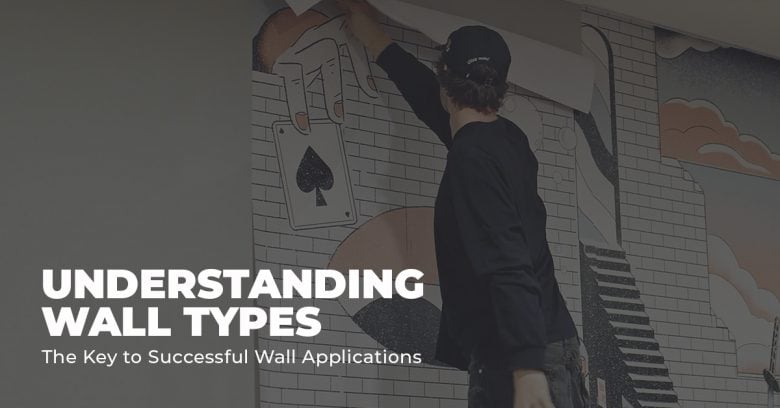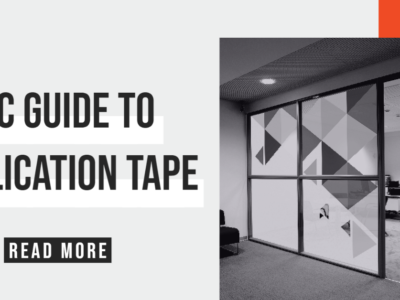When it comes to vinyl applications, one size does not fit all. The type of wall on which you apply vinyl significantly impacts the adhesion, appearance, and longevity of the final product. With a variety of wall types out there, it’s essential to understand their unique characteristics and how they affect vinyl applications.
1. Painted Drywall
Painted drywall is perhaps the most common interior wall type. It provides a relatively smooth and non-porous surface, making it a good candidate for vinyl applications. However, the type of paint used on the drywall can affect adhesion. It’s also essential to ensure the paint is fully cured before applying vinyl, as outgassing from uncured paint can lead to bubbling or peeling. If you need a graphic film with repositionable adhesive, DPF 4600GLX is a great product to consider. IF repositionability is not a priority and you need a bit more tack, go with DPF 8200X.
2. Brick and Concrete

Brick and concrete walls offer a unique aesthetic, but their rough and porous surface can pose challenges for vinyl application. These wall types require high-tack adhesives, a heat gun, and a roller applicator to ensure the vinyl conforms to the texture and achieves proper adhesion. It’s also critical to clean these surfaces thoroughly to remove any dust or debris that could interfere with adhesion.
DPF 8000 and DPF 8200 are viable options to adhere to textured walls. However, for maximum texture conformability, a cast film like DPF 6700, will be necessary. We recommend you pair any of those graphic films with Series 3310 PVC-Free for maximum protection and texture conformability.
3. Plastered Walls
Plastered walls can be smooth or textured, which affects the choice of vinyl and application method. Smooth plastered walls behave similarly to painted drywall, while textured plaster may require a more aggressive adhesive like DPF 8200. Additionally, moisture content in the plaster can affect vinyl adhesion, so it’s important to ensure the wall is dry before application.
4. Wood Paneling

Wood paneling can offer a rustic aesthetic, but the grooves and grains can make vinyl application challenging. Vinyl with a high degree of flexibility, such as DPF 6700, and even an aggressive adhesive, like DPF 8000, can help ensure a successful application on wood paneling. As with other types of walls, the paneling should be clean and dry before application. Any clear coating on the wood must be taken into account.
5. Wallpaper
Applying vinyl to wallpapered walls can be tricky. The success of the application depends largely on the quality and condition of the wallpaper, the texture, and whether the wallpaper is coated or uncoated. Testing adhesion on a small, unnoticeable area is recommended before proceeding with a full application. Consider using a graphic film with a removable adhesive like DPF 4400 or DPF 4200 to ensure easy removal without damaging the existing wallpaper.
Conclusion
Understanding the type of wall you’re working with is crucial for a successful vinyl application. Whether it’s painted drywall, brick, concrete, plaster, wood paneling, or wallpaper, each wall type presents unique challenges and considerations.
In addition to the texture and type of wall, the paint is a significant variable for the success of your project. We’ve tested several paints and primers for walls which you can see here:
By understanding these factors, you can choose the right vinyl product and application method to achieve the best results. Always remember to clean the surface, ensure it’s dry, and test the adhesion before full application.



